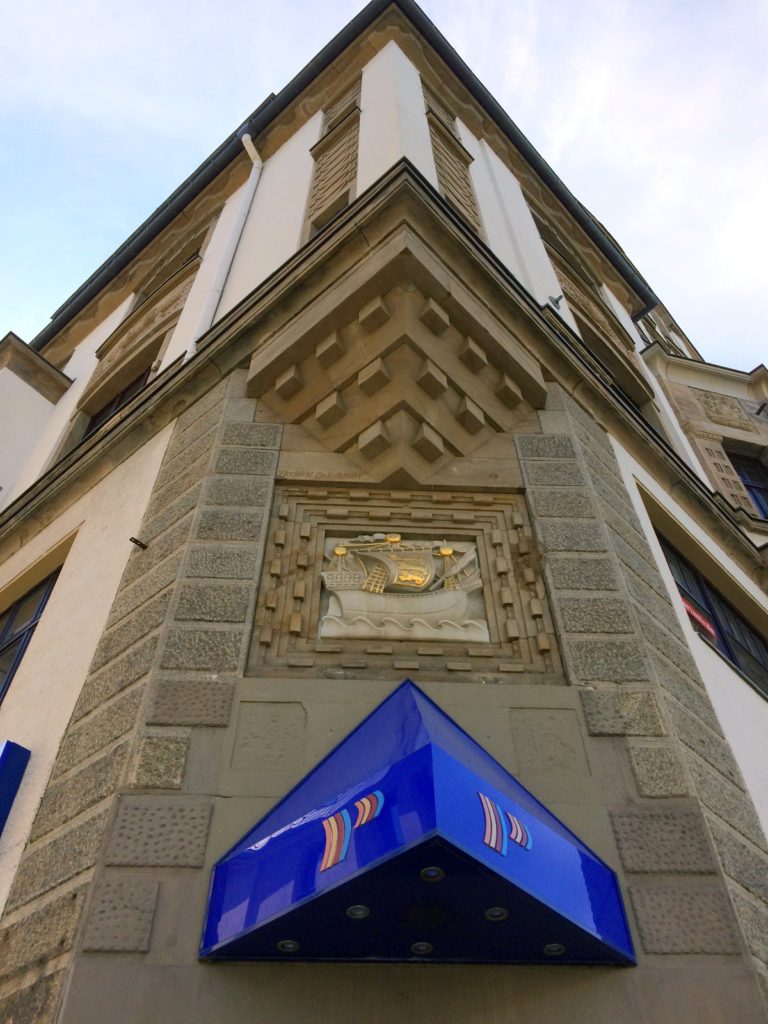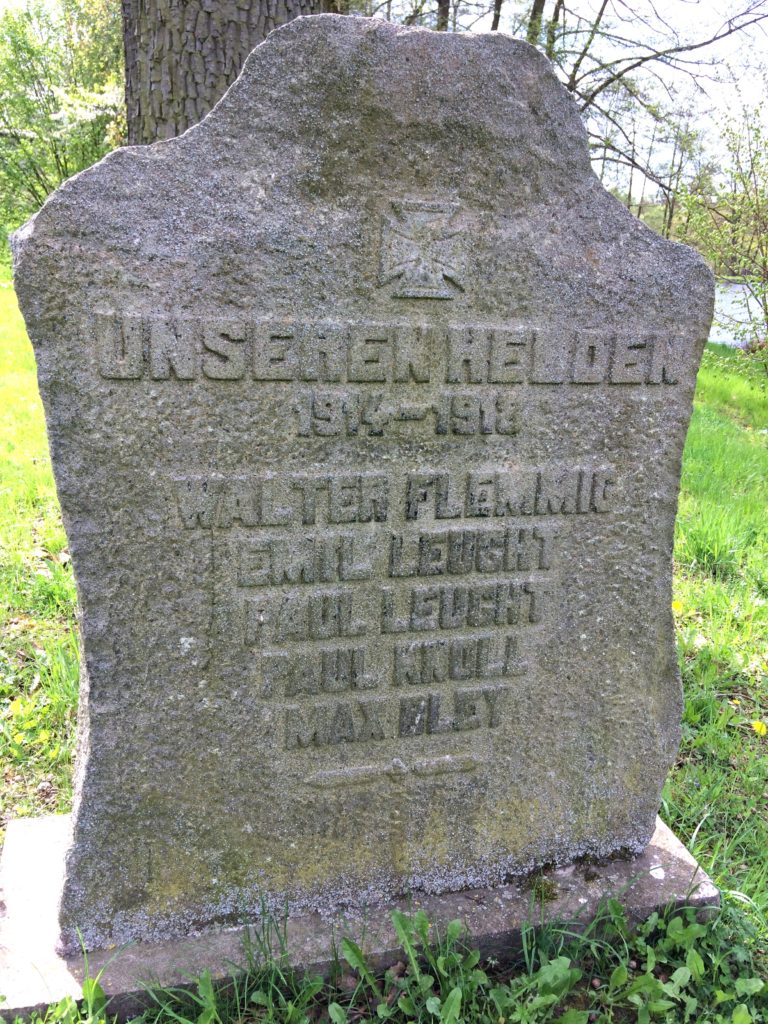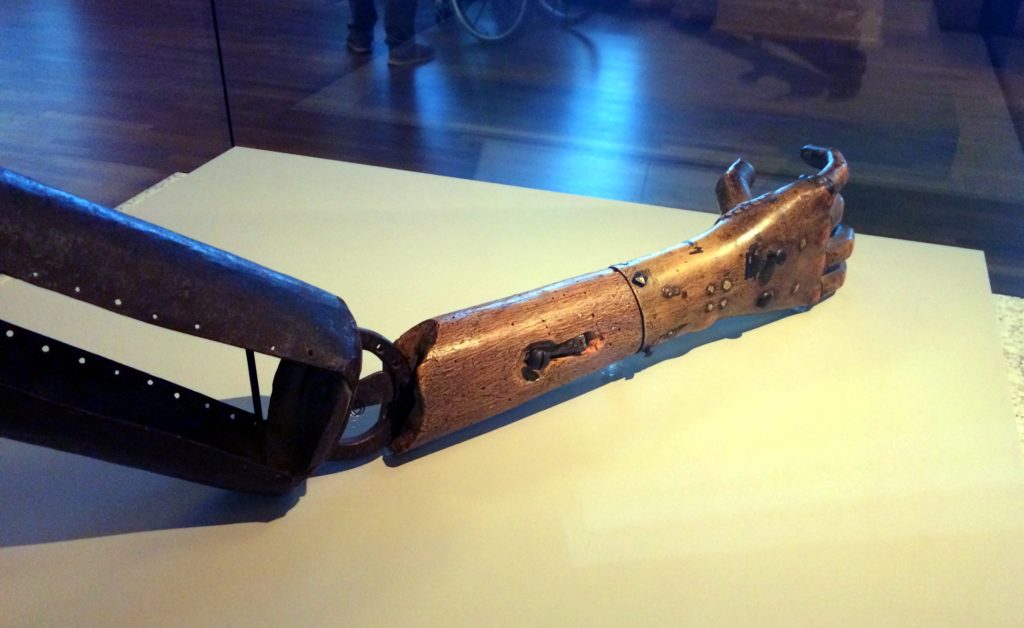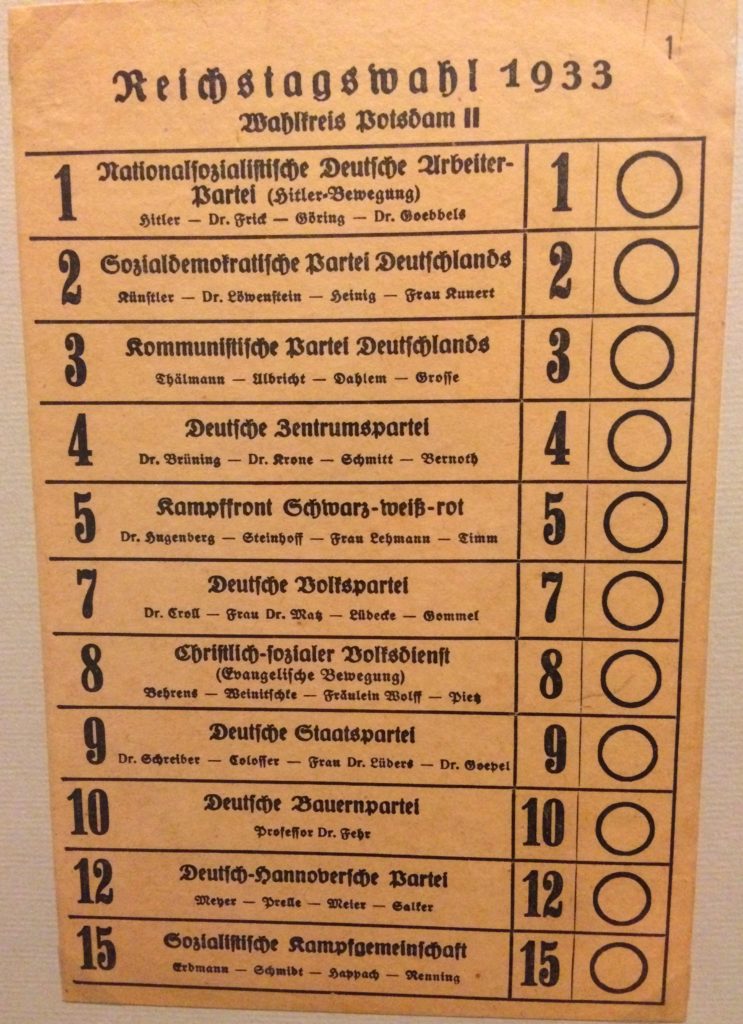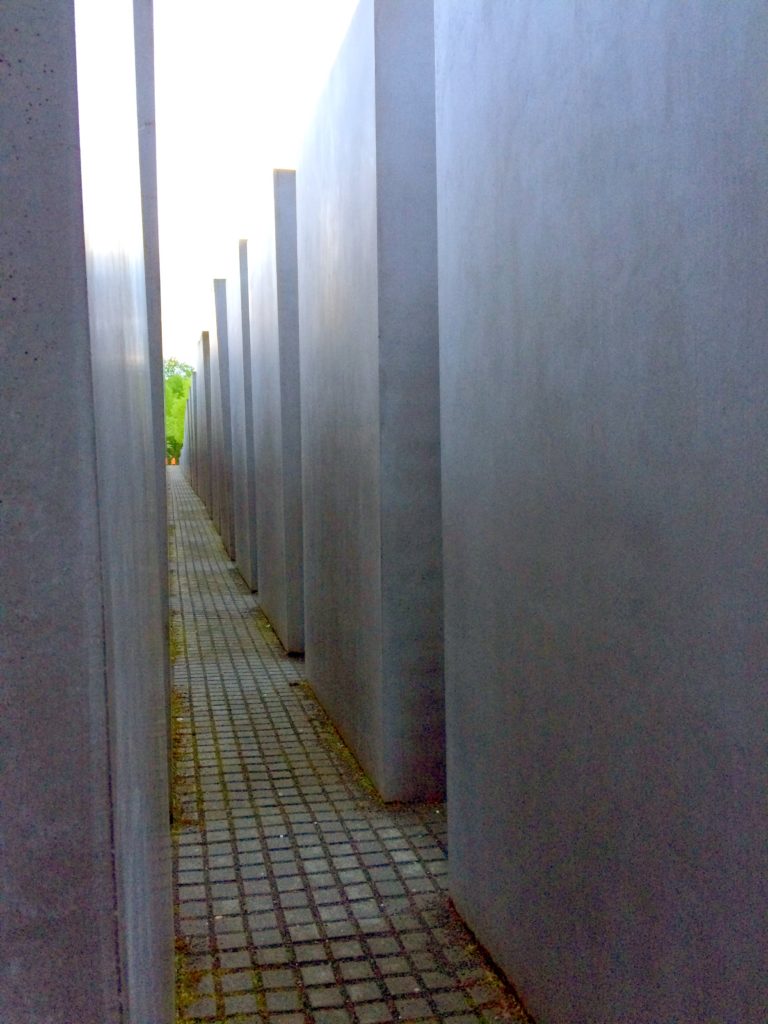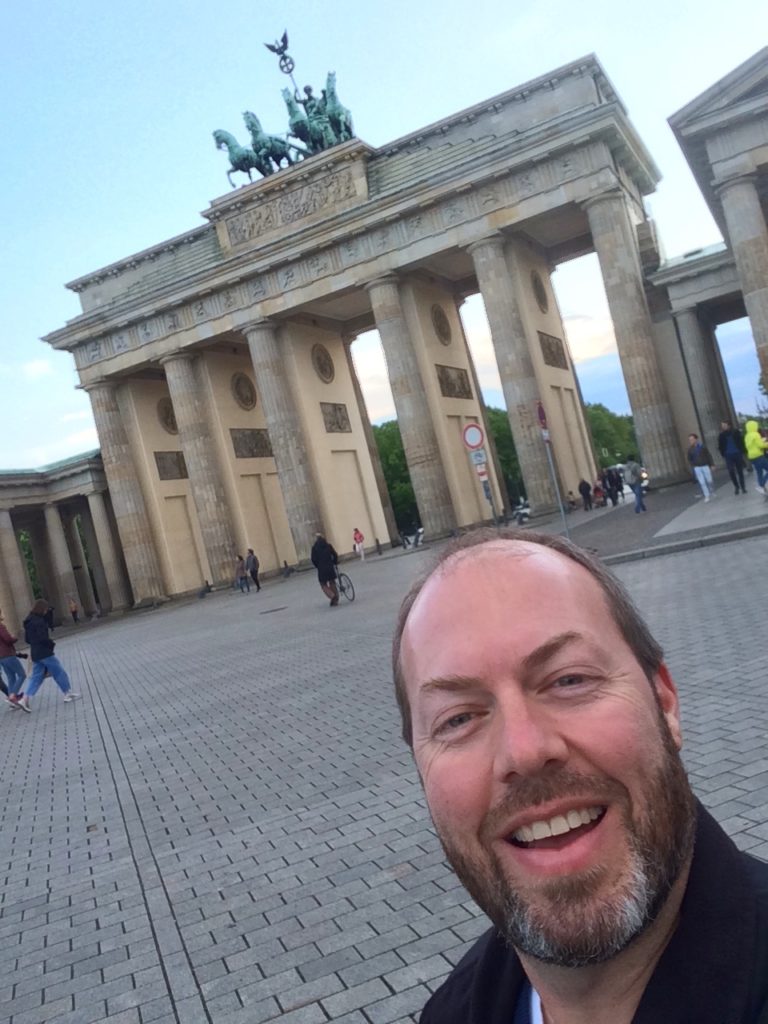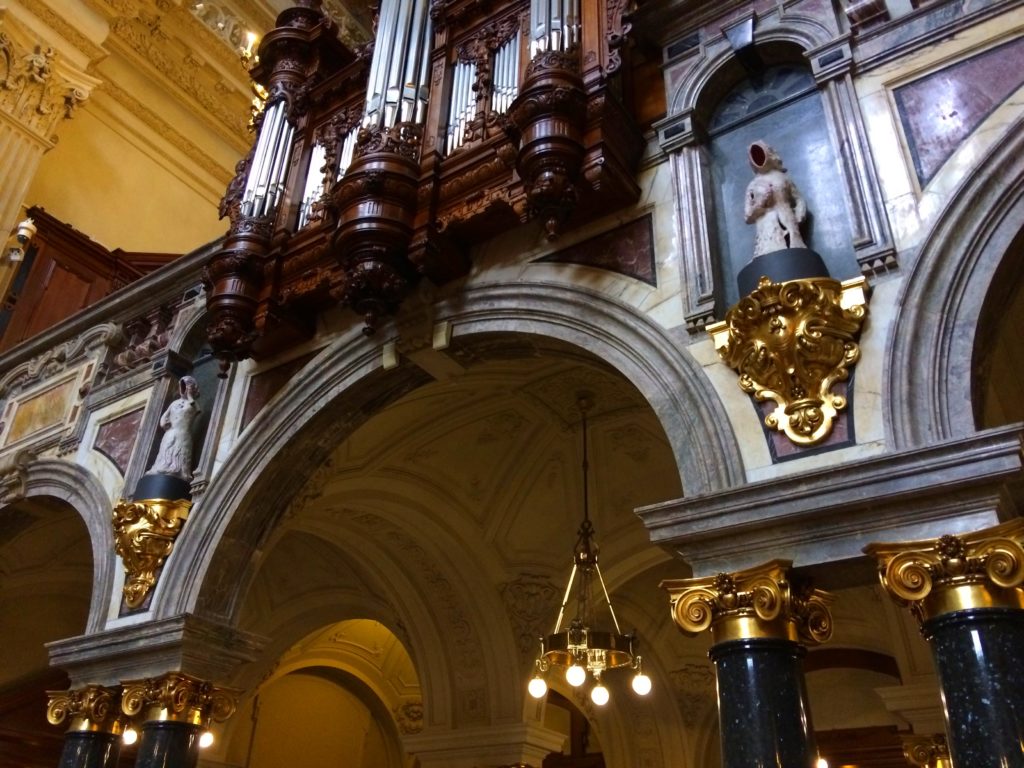Even More Berlin Sights
A couple weeks ago after speaking at a software developer conference in Berlin Germany, I had the opportunity to take several personal days while there and I got to see quite a bit of the city! It was pretty amazing!
There was so much to see and do in the city of Berlin, that I can’t even fit it all into two separate blog posts! So welcome to part 3 of Berlin sights!
Computerspiele (Computer Game) Museum
I only happened upon this small unassuming museum because I walked right past it on my way to the conference! It’s a great little museum, though! The Computerspiele Museum covers computer gaming, console gaming, and handheld gaming. It has some great exhibits and displays and it also has lots of retro games that you can actually play!

This was the display for a cool home console system that I had never seen before. It’s a Magnavox Odyssey console from 1972. I was 2 at the time, so it’s no surprise that I don’t remember this console.
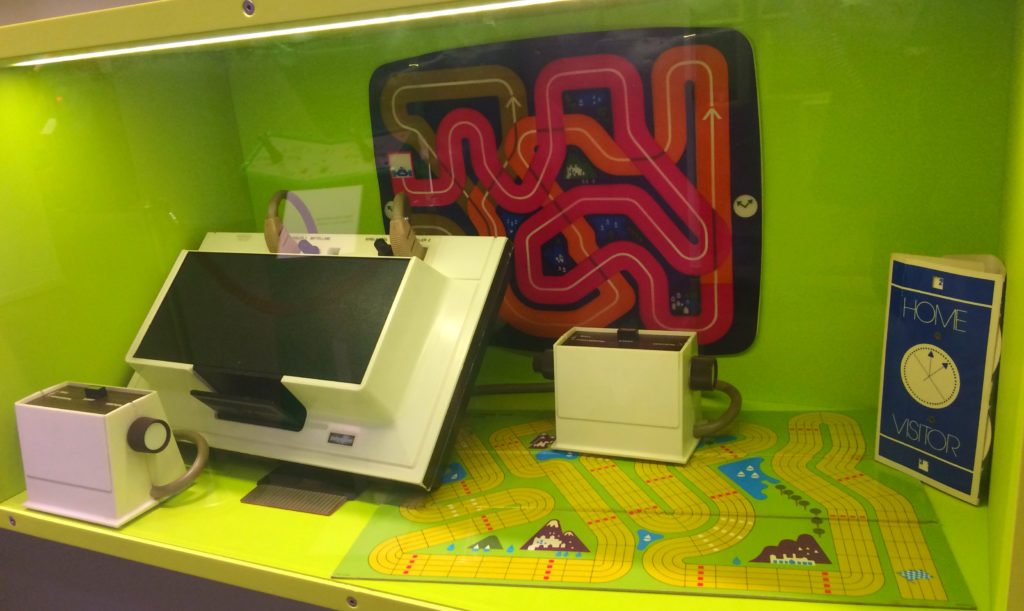
It was black and white and it didn’t have any sound. It did not use memory storage game cartridges. Users actually swapped out various circuitry cards in order to change the play mode of the system. It included a very rudimentary set of controllers that had a couple of dials that the users turned to move simple white targets around on the TV screen. And the really unique thing about this system is that it came with a set of transparencies or overlays that users were supposed to attach to the front of their TV screen using static cling! Amazing!
Here is one of the original Pong arcade game upright cabinets from 1972! Look how simple it was! Just a single knob for each player! Awesome!

Pong was originally intended to be a warm-up exercise for a new employee at Atari. The prototype was so impressive, that his bosses decided to mass produce and market it! And the rest is history!
Awesome video game history!
The success of the arcade version of Pong, led many companies to create their own rip-off versions or remakes. Including the one pictured below.

The Computer Game Museum has a number of small retro rooms set up to look like they were ripped right out of your past. And these retro rooms include working consoles like the Pong ripoff console shown in the above photo. My apologies to the young gamers who were enjoying the game when I snapped this photo.
Here is Mattel’s Football handheld game on display in the museum. It was super popular in 1977 and I remember it well. This thing was literally hours worth of entertainment! And it was so simple to play!

Speaking of working retro games that you can actually play, here are just a couple of the working arcade cabinets in the museum. No quarters necessary! I played them all while I was there! These particular cabinets are probably from the early 1980s. Some of the internal components have been upgraded out of necessity, but you really can’t tell from the outside.

Now this is super cool. On display in the museum is this early 80s Apple II+ that is actually signed by Steve Wozniak (Woz)!
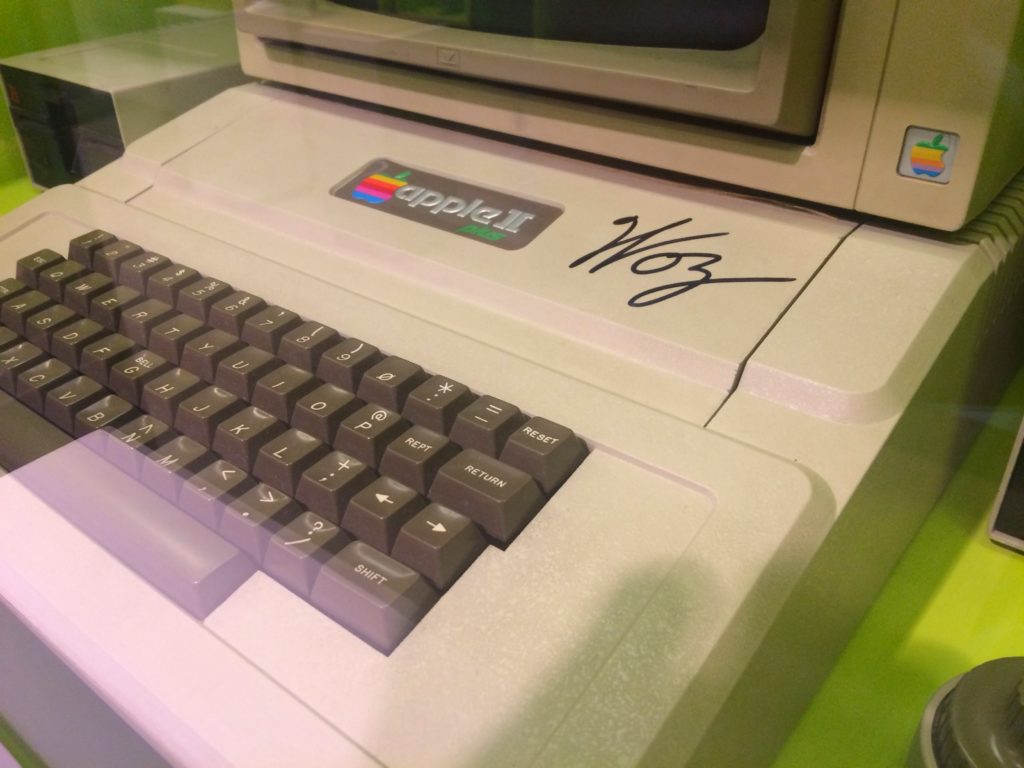
This particular Apple computer model was made from 1979 to 1982 and they really got Apple moving as the premier computer manufacturer of that time. I was and still am the proud owner of an Apple IIe, which came out in 1983 and enjoyed a glorious 10 year run!
The Pac-Man video game was released in 1980 and was a smash hit! It’s been released on so many platforms, it’s ridiculous! The Computer Game Museum in Berlin has one that you can play using this huge Atari 2600 looking joystick! That’s cool! It looks like it’s playing on a working Atari 2600 Jr console!

This display is pretty cool to me, because I actually owned this Coleco Galaxian tabletop mini arcade game. I played the heck out of this thing and I can totally hear the little tune it played right before the little aliens started careening down on top of you!

It was worth hours and hours of entertainment for a single player or while playing with a friend!
Here is another example of a retro working game console that you could just walk up to and start playing in the Computer Game Museum in Berlin. It’s the Rampage game from 1986 running on a Sega Master System console.

This is especially relevant since the Rampage movie, based on the video game, was released just a week before I went to Berlin!
Here is another example from 1989 that you can actually sit down and play. It’s a game called It Came From The Desert running on a Commodore Amiga 500 PC.
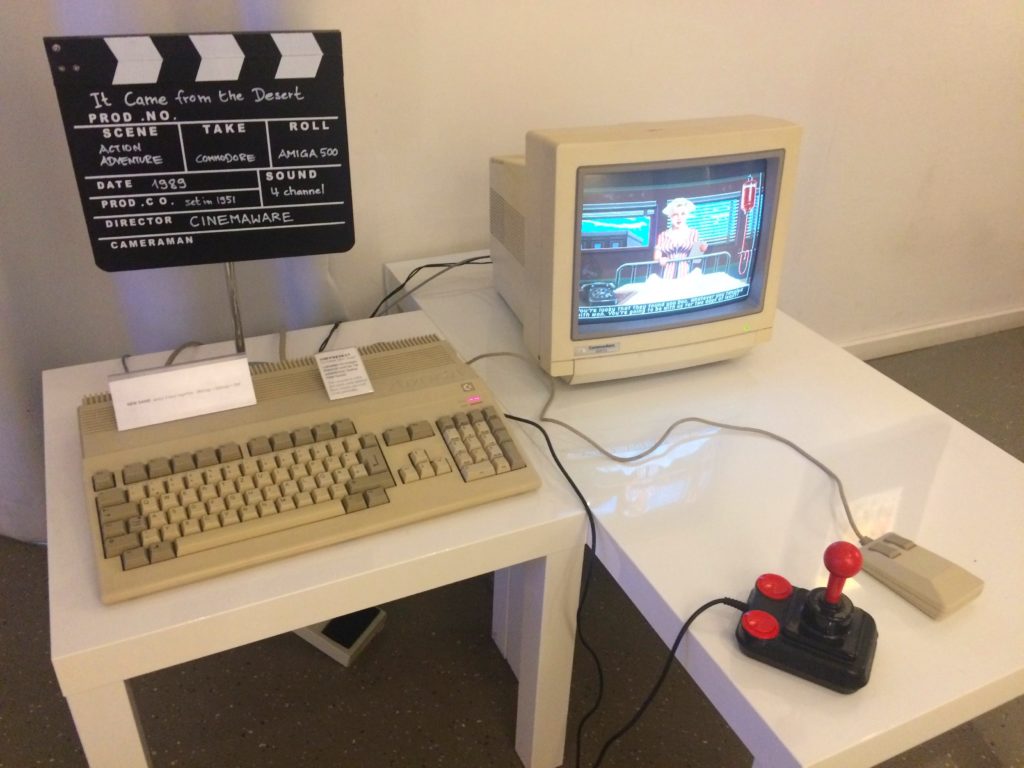
Okay this next display was really really cool! It was an entire wall full of maybe 16 inch by 16 inch blocks stacked up. The blocks were ordered by year and each block showed a noteworthy game from the history of video games.

A laser light projected cross-hairs onto one of the blocks and there was a single joystick in front of the wall. If you moved the joystick, it moved the laser projected cross-hairs to the adjacent block. Whichever block was lit up by the cross-hairs immediately gave you a show, of sorts, up on the large monitors at the top of the wall.

The show for each video game included several video snippets from the game-play, often including the splash screen, on the left monitor. The show also included details about the game (including publisher, designers, etc.) displayed on the right monitor.
I spent probably close to an hour watching the game-play from every single game on this wall. Including several games that I played as a kid, that brought back so many great memories. All the nostalgia feels! Very well done, Computer Game Museum of Berlin!
There was a lot more to see and learn in this museum, but I don’t want to overdo it here on my blog. I will leave readers with one last photo. These larger-than-life characters were all over the museum! Cool!

Fountains
Okay, let’s change gears now. There were a couple pretty neat fountains in the center of Berlin that I want to show you.
Neptunbrunnen, or Neptune Fountain was built in 1891 and features the Roman god Neptune surrounded by various animals and 4 prominent women, who represent the 4 main rivers of the country. This fountain is right next to St. Mary’s Church. It’s a pretty cool old fountain!

There is another, more modern and abstract, fountain just a block north of Neptunbrunnen. This is called Brunnen der Völkerfreundschaft, or Fountain of Friendship Between People.
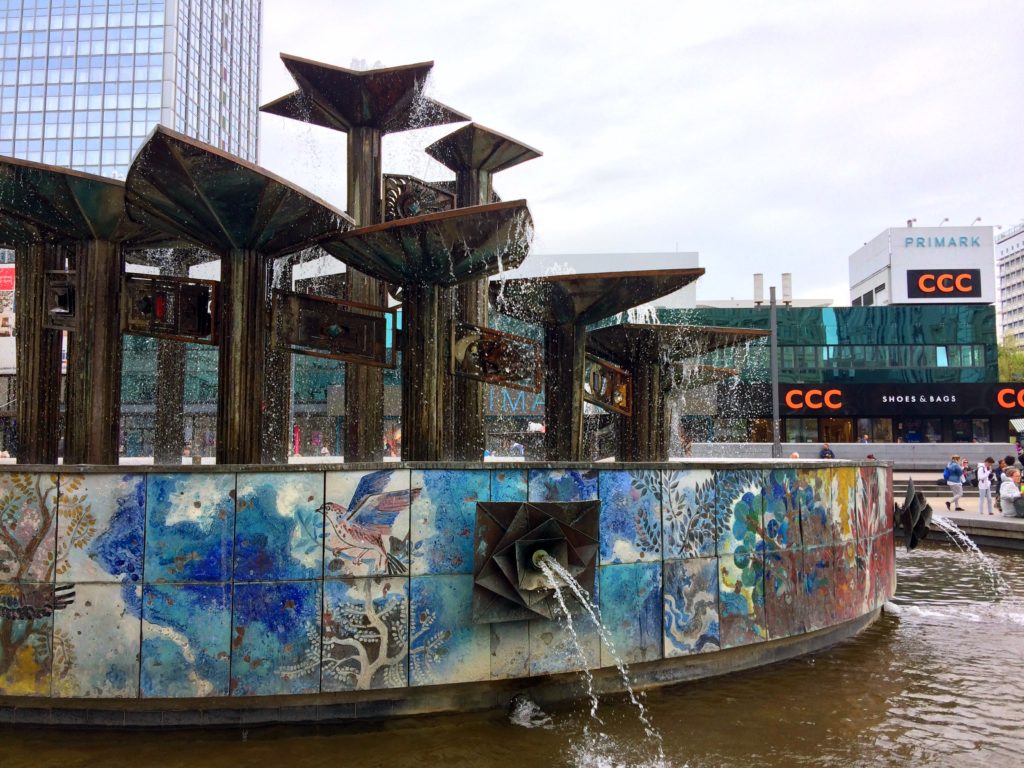
It’s also called the Fountain of International Friendship.

German Biergarten (Beer Garden)
I’m not a big beer drinker. Okay, I’m not any kind of beer drinker, big or small. But I noticed that you can’t throw a rock in Germany without hitting one of these Biergartens. They are outdoor entertainment areas where beer and food are served, usually at large shared tables.

The one pictured above is in Tiergarten Park and it’s on a cute little lake, complete with cute little boats that you can enjoy. Sadly this particular beer garden was closed when I was there. It looks like a lot of fun, though.
Reichstag (Parliament) Building
While I was in Berlin, I really wanted to check out the Parliament Building, and especially I wanted to visit the gigantic glass Dome on top of the Parliament Building!
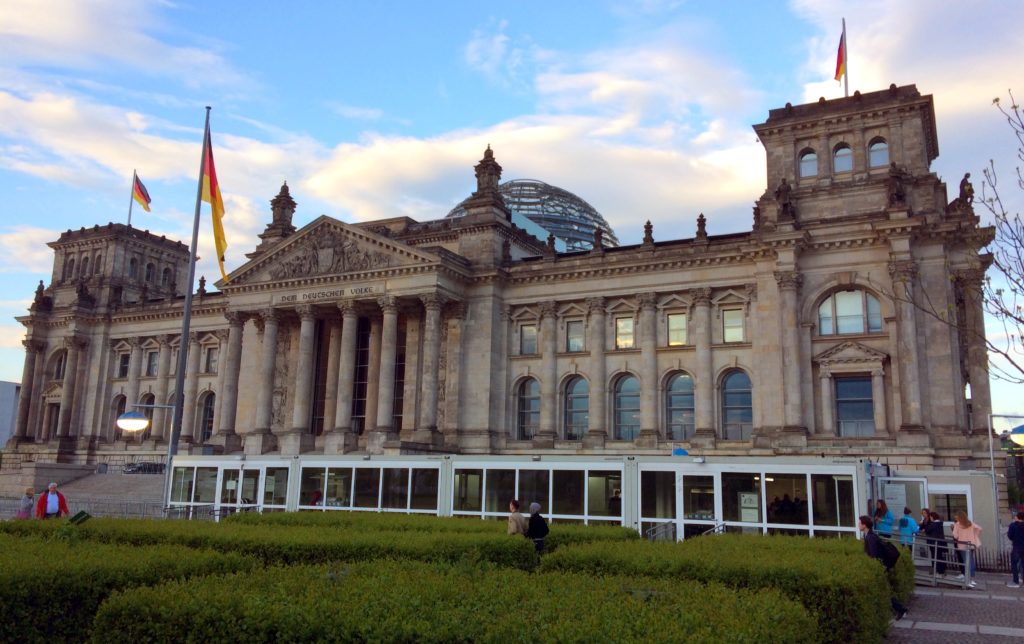
From the Dome, I hear that you can see the whole city! And you can also peer into the debating chamber of Parliament below! The Dome symbolizes that the people are above the government, which was not the case during Nazism. That’s super cool!
But sadly for me, you need a reservation to visit the dome and I didn’t submit my request early enough and so there were no slots available when I tried. Missed opportunity.
Marienkirche (St. Mary’s Church)
Here are several photos from St. Mary’s Church, which is centrally located in Berlin. It’s a fairly impressive building.

It’s very cool inside too. The light colors on the columns and the ceiling keep it very bright inside.

The speaking pulpit is quite grand.

And so is the pipe organ.

Here is the alter area.

I’m not sure what this little memorial thing is all about, but it looks like the little cherub at the top is holding a club over the man’s head. Also, there is a lot of wheat in this memorial for some reason or another. If anyone knows what this is all about, please leave some details in the comments.
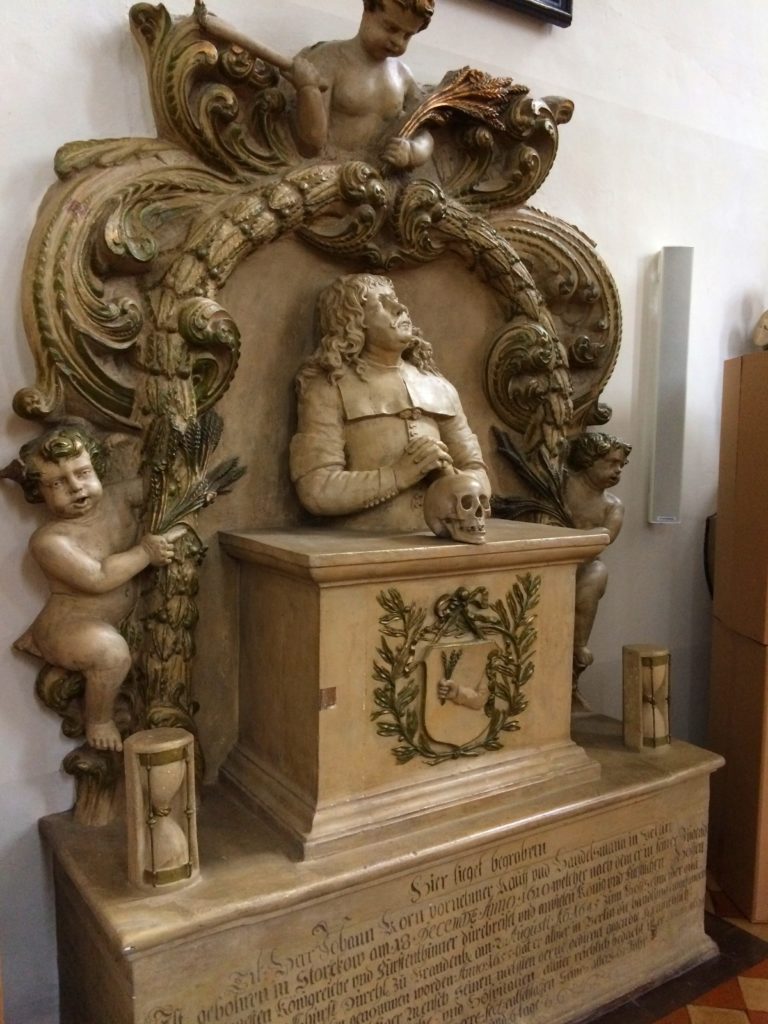
Here is another strange thing that stood out to me in St. Mary’s Church. This baptismal bath thingy has dragons or something similar prominently adorning it. That struck me as odd, but that was probably common in Europe long ago.

Protestant St. Peter’s Cemetery
This was a cemetery that I walked by several times on my way to and from the conference. I walked through it one day and took a few photos, since it wasn’t like cemeteries in America that I’m familiar with. The plots were quite small, but they were all beautifully kept and tended.

Then along the outside, there were large plots. some were nicely tended and some looked like they had not been touched in a hundred years.


Misc.
Okay, I’m finally down to the last several photos from Berlin. I just have a few miscellaneous things to point out and then we will be all done exploring Berlin.
One thing that I immediately noticed about Berlin is that they have amazing public transportation. I used the bus system, the tram system, and also the subway system while I was there. They were all reasonably priced and I also noticed that they were all very clean. So don’t be afraid to use them while you’re in town.
I also noticed that a lot of locals ride bicycles, as you can see in the photo below. At just about every major intersection, the bicyclists seemed to stack up almost as much as the vehicles. I also noticed several vendors renting bicycles to tourists. It looked like most of the roads were laid out with bicyclists in mind, so Berlin is definitely a good city to explore on a bike.

This photo shows a pretty cool world clock situated in the public square. It shows the current time all around the world which I thought was pretty interesting.

I didn’t have the time to take a boat tour, but the city of Berlin has the Spree river cutting right through its heart. And Berlin hosts tons and tons of river cruises, which I’ve heard are pretty fun to experience.

This building was just amazing. I don’t know what it was and I didn’t have time to explore it, but it just blew me away. This in in Potsdamer Plaza.

Also in Potsdamer Plaza was this gigantic circus-tent-looking structure called the Sony Center. It’s pretty crazy. It’s basically a mall inside with several stores and shops and restaurants and even a hotel. It’s an open air design, as you can see from the photo, but with a very big and impressive tent-style roof made of glass and steel.

This photo is just for fun. I didn’t see a ton of street vendors in Berlin, but this guy had quite a mobile setup going. It made my body hurt, just seeing him carrying around all that weight, though.

Here is the hotel that I stayed in and the church adjacent to it. It was the Leonardo Royal Hotel. It was a pretty nice hotel. I would probably stay there again.

Literally right outside my hotel lobby in the middle of the sidewalk, was this little unassuming memorial embedded into the cobblestone sidewalk. I googled it and found the Stolpersteine (stumbling stones) project. The project commemorates people who were persecuted by the Nazis. There are more than 7,500 of these little memorials installed around the city! Amazing!

The plate on the left says: Here lived Samuel Nussdorf, born 1880, deported 29.1.1943, murdered in Auschwitz.
The plate on the right says: Here lived Frieda Nussdorf, maiden name Hirsch, born 1886, deported 29.1.1943, murdered in Auschwitz.
These are nice little memorials to keep everyone who walks down this sidewalk aware of what happened back then.
So much more to see in Berlin!
Okay, so those were the areas of Berlin that I was able to see during my 3 personal days that I had available to explore on my own time. But there is so much more to see in Berlin! I really only scratched the surface! So enjoy your stay in Berlin and go see everything that Berlin has to offer! And also feel free to comment below on things that I missed or things that I got wrong!
But wait, there’s more Germany!
Berlin wasn’t actually the end of the line for the personal portion of my stay in Germany. I was actually able to see some of the countryside too! Next time I’ll publish some details and photos from that experience!
Thanks for your interest!
Kurt





